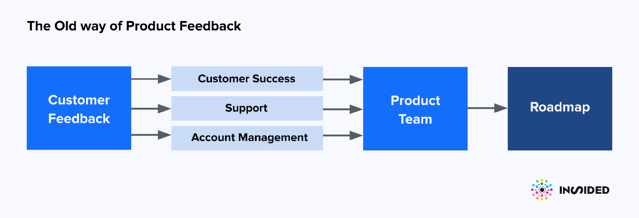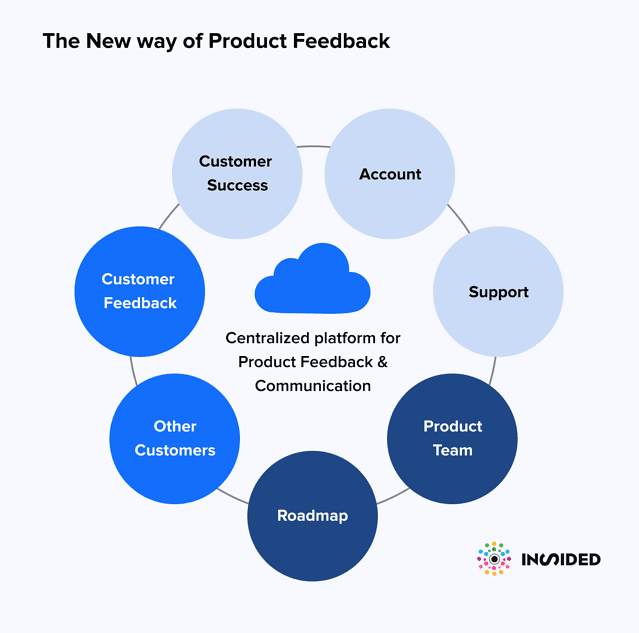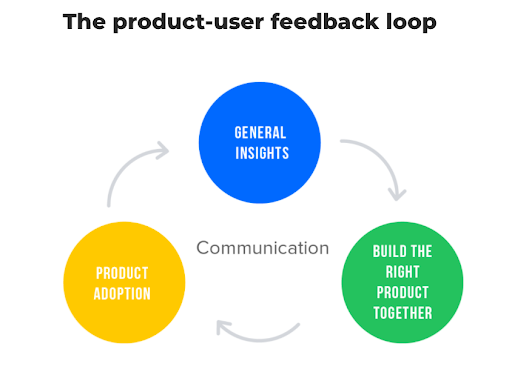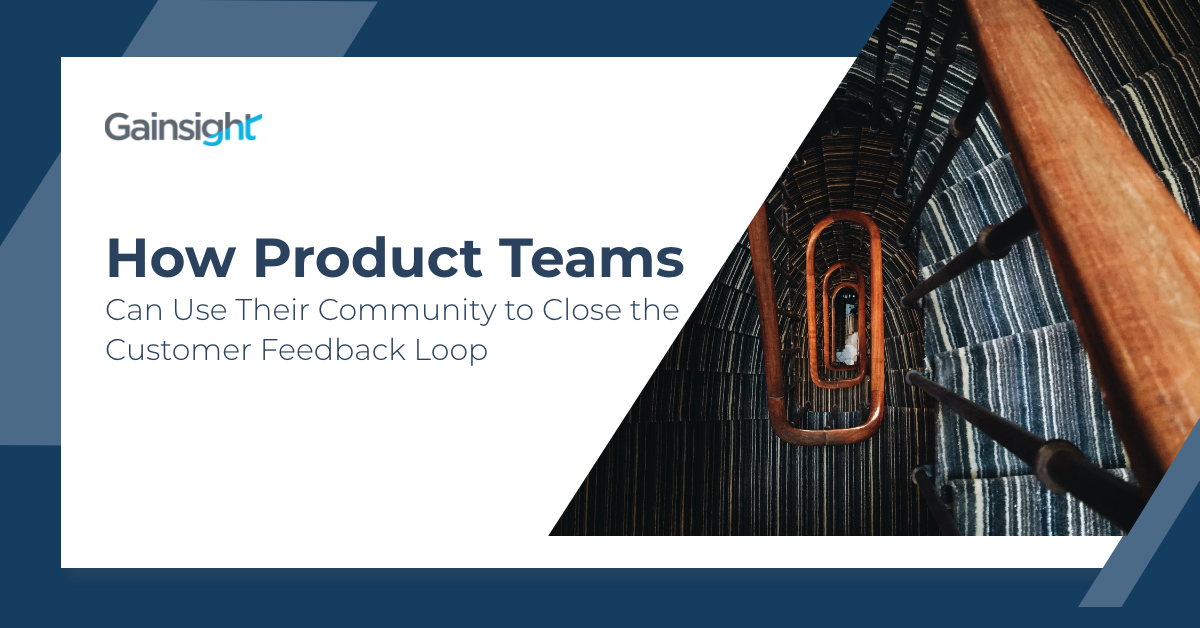Why should you involve your customers and users in the Product feedback and ideation process?
Getting customer feedback isn’t a new concept. Your users interact with your product all day to solve their challenges, achieve their goals, and execute their work. Who could be better suited to give you real insights into the way you’ve built the software and the possible gaps there might be that are making their workdays harder?
From a product development standpoint, customer feedback is vital. Yes, your product roadmap is designed with the company’s future vision in mind, but how do we know which problems we most want to solve unless we truly understand what those problems actually are?
Typically, SaaS vendors do their best to incorporate the ‘Voice of the Customer’ (VoC) into their roadmaps, displaying their commitment to their users. But be honest, how often have these customer requests or ideas felt more like an opportunity to appease less successful customers (or even your internal Customer Success team) then really innovative product ideas that the Product team feels excited to work on?
If that sentiment feels vaguely familiar, then it’s likely you’ve been overlooking the fact that with just a few tweaks, the process of gathering, prioritizing, and actioning your customers’ input could be much more beneficial to you.
Some of the more commonly overlooked aspects of gathering feedback and ideation input from your user base include:
- You’ll be able to identify the specific pain points that your customers are experiencing when they tell you in their own words, rather than relying on your team’s guesswork.
- Gathering customer feedback usually involves understanding their use case; what is the customer trying to achieve that they are not succeeding with right now? Is this a real opportunity for product development, or will customer education and support help them achieve their goal with the current functionality?
- When you can get input from a significant proportion of your customer base, you’re able to prioritize the feedback you’re getting much more effectively. Does a large majority of your customers echo an idea, or are you receiving numerous versions of the same feature request? If so, it’s going to serve you best to prioritize this over a single request from a less successful customer with a lower ACV.
- Collecting feedback from a wide variety of customers across different verticals and market segments will help you identify industry-specific requirements, see which segments of your customer base are having the most (and least) success with your product, and tweak your go-to-market strategy accordingly.
The Classic One-Way Customer Feedback Process
Think about the last time you were made aware of a product development idea from a customer. The idea could have come from a slack message from a colleague in the Customer Success team to your Product team’s channel. Alternatively, it could have been an email forwarded from someone on the Support team or a CSM comment after a QBR with a customer.
Think about what you did with that feedback. Did you speak to the customer about it? Or did you add it to your ideation backlog on JIRA and move on to the next pressing issue?
Typically, customer feedback in the form of feature requests and ideation makes its way down a one-way street to its ultimate destination—the Product team. Whether or not the input gets actioned (or even considered!) often remains a mystery to the user in question, unless they ask their CSM for an update or later see the request come to life in a feature announcement.

Aside from a communication breakdown, the other disadvantage of this traditional one-way process is the customer’s lack of value. Sure, hopefully, their input leads to a product update that will then improve the user experience. Still, they miss out on potential insights from other users with the same challenge or a similar use case.
This is where a community and the new way of product feedback comes in.
How Community facilitates a Closed-Loop Feedback Process
It isn’t easy to close the loop when you don’t know where it started. And that’s typically the case for customer input from various sources: Chats with their CSM, an email to support, a Tweet, or a discussion point in an MBR.
With an online community like Gainsight’s Gamechanger community, the difference is clear. You create one central place with a straightforward, streamlined process where your customers can come together to give feedback and benefit from the value exchange that was missing before—on your platform.
This secure, transparent environment where customers are already discussing their use cases and sharing best practices is the perfect forum (if you’ll excuse the pun!) for Product teams to truly gain insights from the customer base. Structured well, it’s also the most effective way to manage user expectations and close that feedback loop. Leading photography SaaS vendors Shootproof has developed a best-in-class process for this with the ideation and functionality of their inSided community platform.
Pro Tip: Create an exact format for feature requests and ideation: Map out the critical factors you want users to consider before submitting their input. What’s the use case? What’s not working now that they need? Why are they trying to achieve X or Y in the first place?
Establishing a closed-loop feedback process using your customer community brings users together and allows everyone to gain a given request’s holistic context. Whether from a support, CS, product or account management perspective—customer feedback and input makes more sense when you can see the complete picture.

Here’s why more and more SaaS vendors are using Community as their all-in-one product feedback and communication platforms:
1. You’ll build a “better” product: This is a no-brainer. Simply put, customer input ensures you are always developing your product in a way that fits the vision (and most pressing needs) of your users. No more unwanted feature updates that your product team thought were essential, but your customers rarely use them.
2. Indexed data in one central place: Which customer requested feature X? Was it with Tom, or on email to Jane? We’re all busy enough. Keep your sanity. With an online community, ideation requests are easily findable on one centralized platform.
Bonus: When the entire customer base can transparently see others’ input, the number of duplicate requests and ideas you receive will decrease dramatically!
3. Own the ideas: Unlike social media groups, on your community, you own the content—something that’s crucial when it comes to potentially sensitive product ideation requests.
4. Facilitate dialogue and customer engagement: As a Product team, using your community for ideation enables you to respond directly to customers transparently. You can justify why (or why not, as the case may be) you are moving forward with specific features. Users not only want this transparency, they expect it. As our product manager, Daniel Boon, explains:
“We always make sure that every customer idea gets a response—no matter how ‘out there’ it may seem. Our approach is always to ask ‘why?’. It’s vital that a product manager can get to the root problem—and this way, we can often find a much better solution than the initially proposed idea.”
Daniel Boon
Product owner, inSided
“We ran an engagement in the CS application that highlighted the fact that we had implemented over 100 ideas from the community in 2019. Not only was it a nice statistic to highlight, but also a way to remind customers about the success and value of the community for sharing their feedback and upvoting each other’s ideas and so on.”
Lila Meyer
Director of Product Education and Community, Gainsight
Did You Know?
In B2B software communities, 30% – 40% of all user content is typically found in the feedback and ideation section.
3 Must-Dos for Product Teams getting involved in Community
- Set a review cadence
- Create a meeting structure
- Manage colleague and user expectations

Read more detail about these and get more tips for Product Teams looking to create effective product feedback processes using community here.

